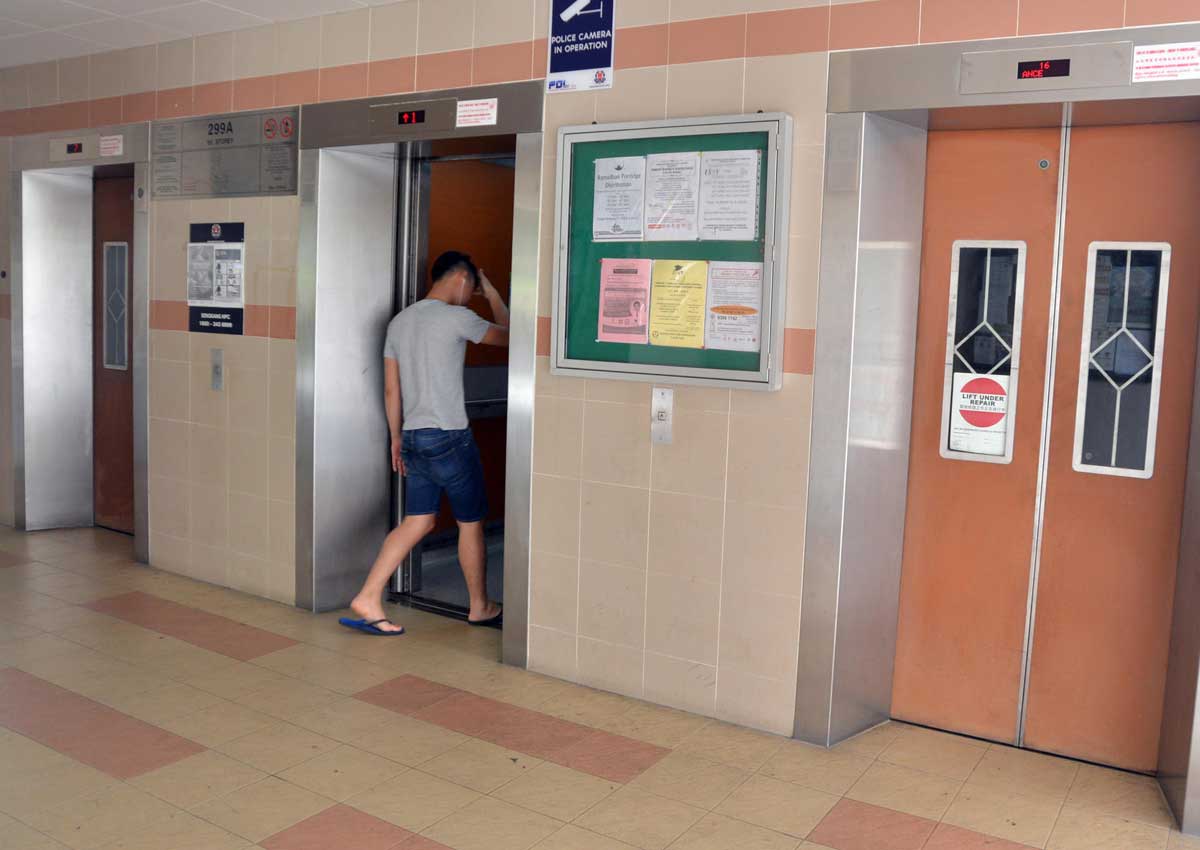TOWN councils will be required to put aside a bigger proportion of their monthly service and conservancy charges (S&CC) into their sinking funds.
A portion of these funds will then have to be set aside specifically for lift replacements to meet new and stricter rules on lift maintenance.
This is because a more comprehensive lift maintenance and replacement programme will inevitably lead to higher costs, Minister for National Development Lawrence Wong said in Parliament yesterday.
“With more rigorous checks over time, town councils are likely to draw more on their sinking funds to replace worn-out lift parts or to carry out a complete replacement of older lifts,” he added, responding to MPs’ questions on lift maintenance.
“Town councils must project and plan ahead, and ensure sufficient savings for long-term financial sustainability,” he said.
However, Mr Wong did not give the percentage of S&CC, which town councils collect from residents each month, that must go into the sinking funds.
Town councils manage Housing Board estates and are required by law to set aside a part of the service and conservancy charges they collect from residents and grants-in-aid they receive from the Government to pay for cyclical works.
They draw on sinking funds to pay for long-term maintenance needs, such as the replacement
of lifts and water pumps.
The Building and Construction Authority, which comes under the Ministry of National Development, will implement tighter maintenance standards for lifts from July 25.
The new and more detailed requirements state, for instance, that brakes and lift parts must be checked to ensure they are not contaminated by oil or grease.
There are 59,000 passenger lifts in all, with about 24,000 of them in HDB estates.
The move to have tighter checks on lifts comes amid recent headlines of accidents and breakdowns.
In a particularly high-profile incident last October, an 86-year-old woman’s lower left arm was severed in a lift accident.
But Mr Wong gave figures yesterday that show the number of lift breakdowns declined last year compared to the two years before that.
Real-time data that monitors lifts in HDB flats showed that there were about 20 breakdowns for every 1,000 lifts each month last year.
This is lower than figures for 2014 and 2013, which recorded about 30 breakdowns per 1,000 lifts every month.
While the rate of breakdowns should be lowered further, Mr Wong said he was citing the figures as there is a perception of a “sudden surge” in the number of lift breakdowns, though the statistics show otherwise.
leepearl@sph.com.sg

Get MyPaper for more stories.






